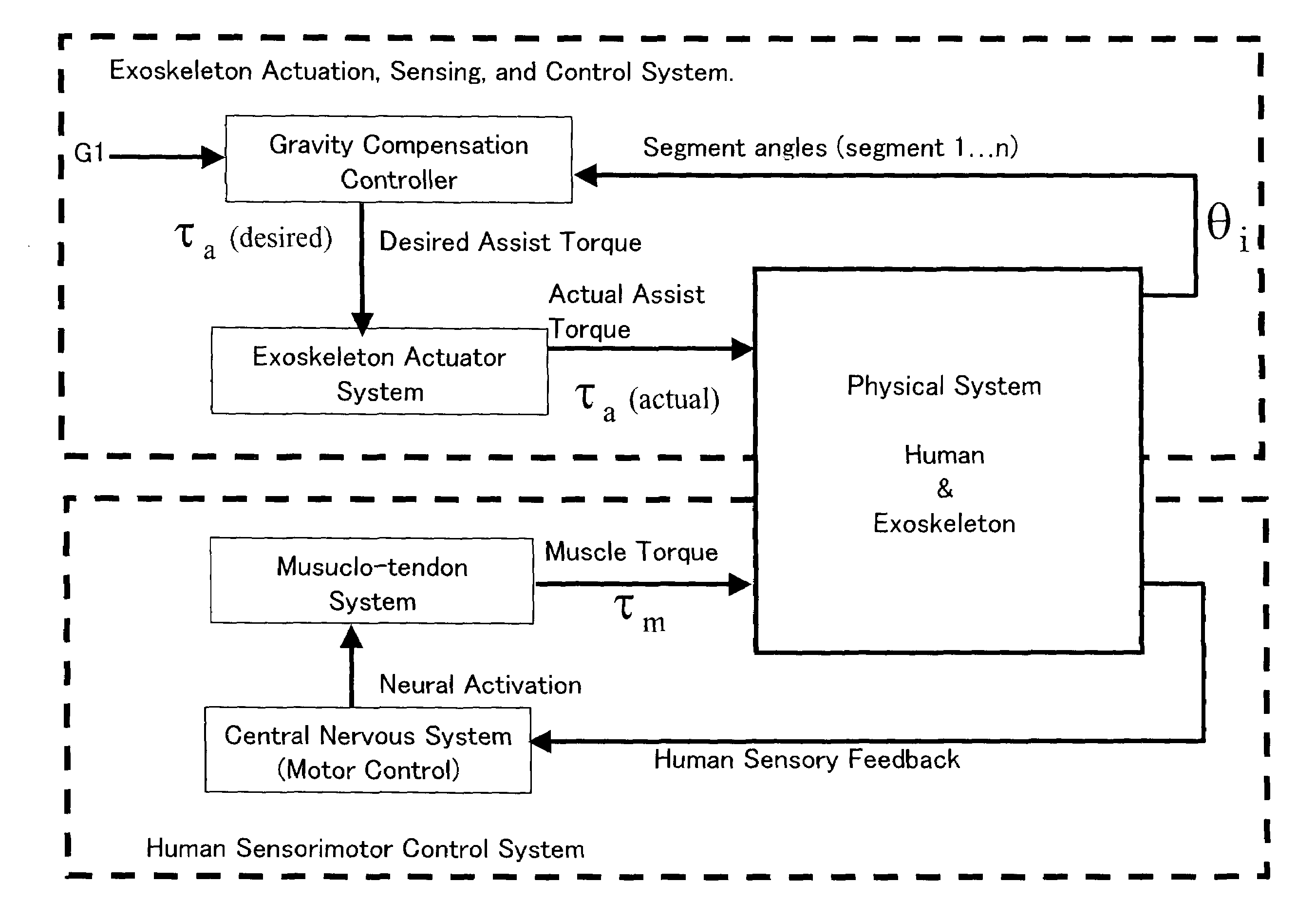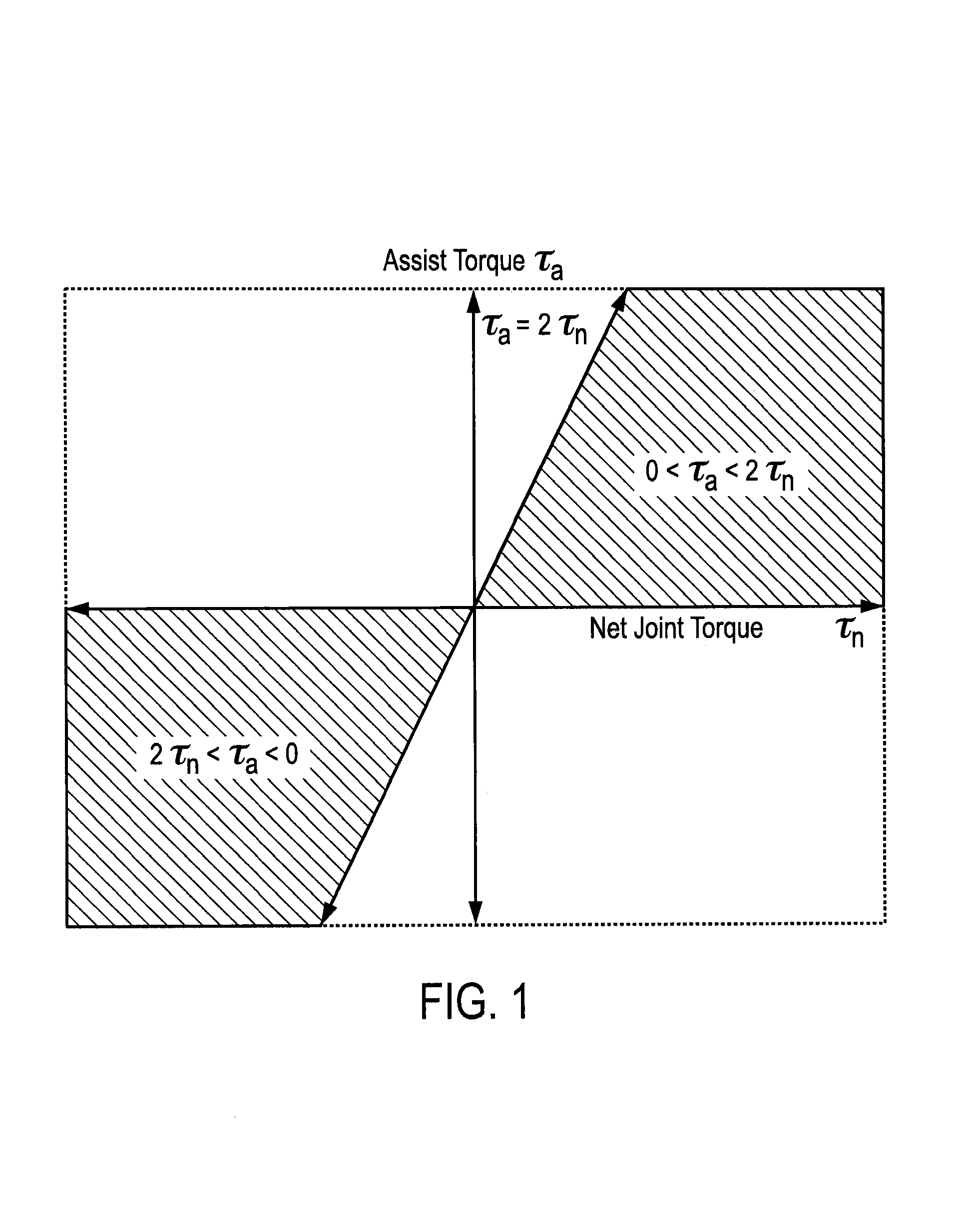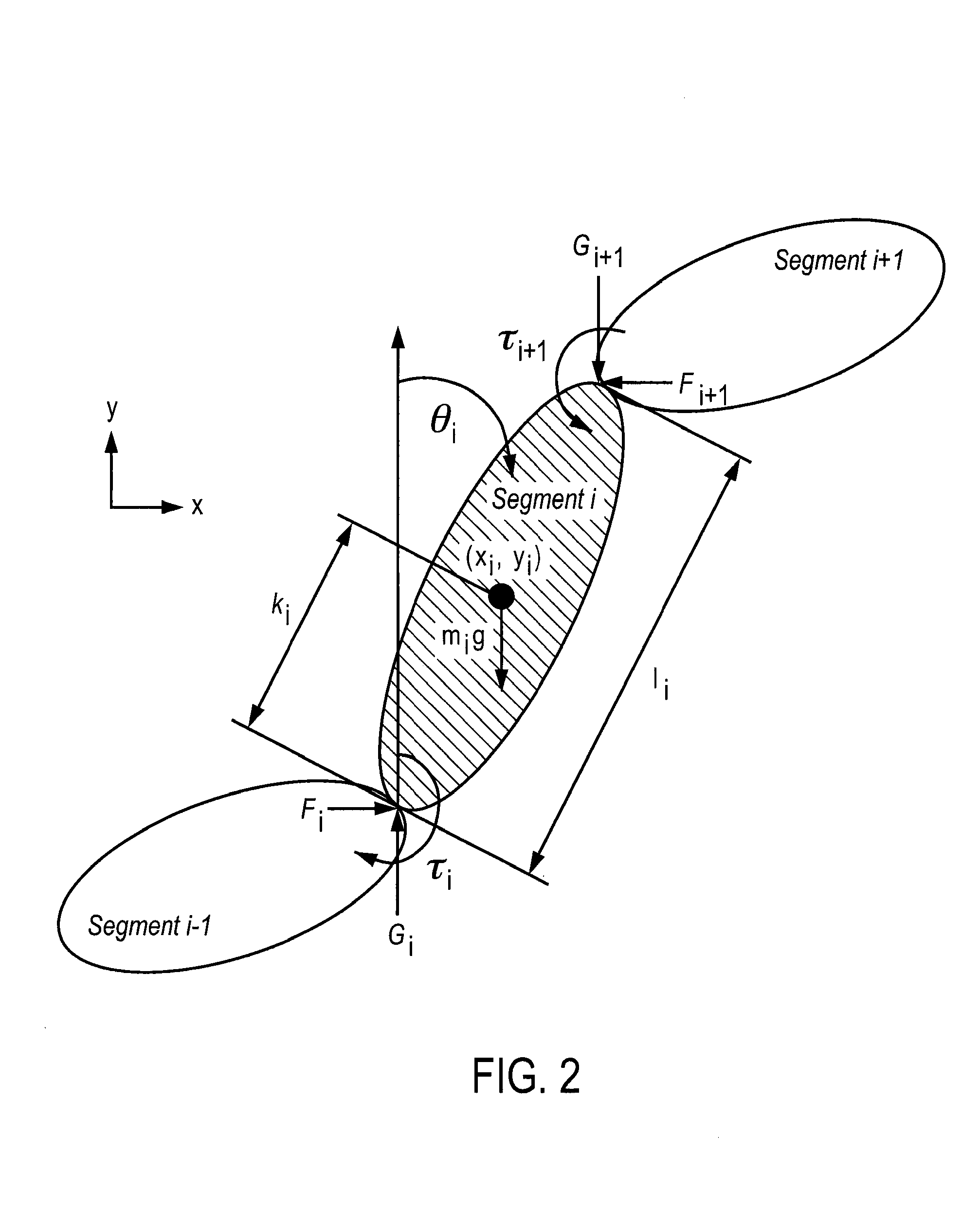Gravity compensation method in a human assist system and a human assist system with gravity compensation control
a technology of gravity compensation and human assist system, which is applied in the direction of apparatus for force/torque/work measurement, instruments, applications, etc., can solve the problems of unanswered questions, complex control of the central nervous system (cns), and the limitation of the practical use of exoskeletons for daily activities, etc., to achieve the effect of applying torqu
- Summary
- Abstract
- Description
- Claims
- Application Information
AI Technical Summary
Benefits of technology
Problems solved by technology
Method used
Image
Examples
Embodiment Construction
Iterative “Ground Up” Gravity Compensation
[0064]Here, we present the gravity compensation algorithm in a recursive formulation. This formulation is more suited for realization of exoskeleton control schemes that are more robust to parametric uncertainties and unmodelled dynamics. The algorithm uses the vertical ground reaction force as a constraint, and iteratively computes the moments at the joints due to gravity. Consider a multi-body planar dynamical system. For an isolated body segment i (i=1 . . . n) as shown in FIG. 2, let ({umlaut over (x)}i,ÿi),θi,{umlaut over (θ)}i be respectively the accelerations of the center of mass, joint angle with respect to the vertical, and angular acceleration. The physical parameters, mi, Ii, li, and ki, represent the mass, moment of inertia, segment length, and length to center of mass of link i.
[0065]Let Fi, Gi, and τi, represent respectively, the horizontal force, vertical force, and joint moment exerted on segment i by segment i−1. Similarly,...
PUM
| Property | Measurement | Unit |
|---|---|---|
| mass | aaaaa | aaaaa |
| mechanical power | aaaaa | aaaaa |
| gravity | aaaaa | aaaaa |
Abstract
Description
Claims
Application Information
 Login to View More
Login to View More - R&D
- Intellectual Property
- Life Sciences
- Materials
- Tech Scout
- Unparalleled Data Quality
- Higher Quality Content
- 60% Fewer Hallucinations
Browse by: Latest US Patents, China's latest patents, Technical Efficacy Thesaurus, Application Domain, Technology Topic, Popular Technical Reports.
© 2025 PatSnap. All rights reserved.Legal|Privacy policy|Modern Slavery Act Transparency Statement|Sitemap|About US| Contact US: help@patsnap.com



